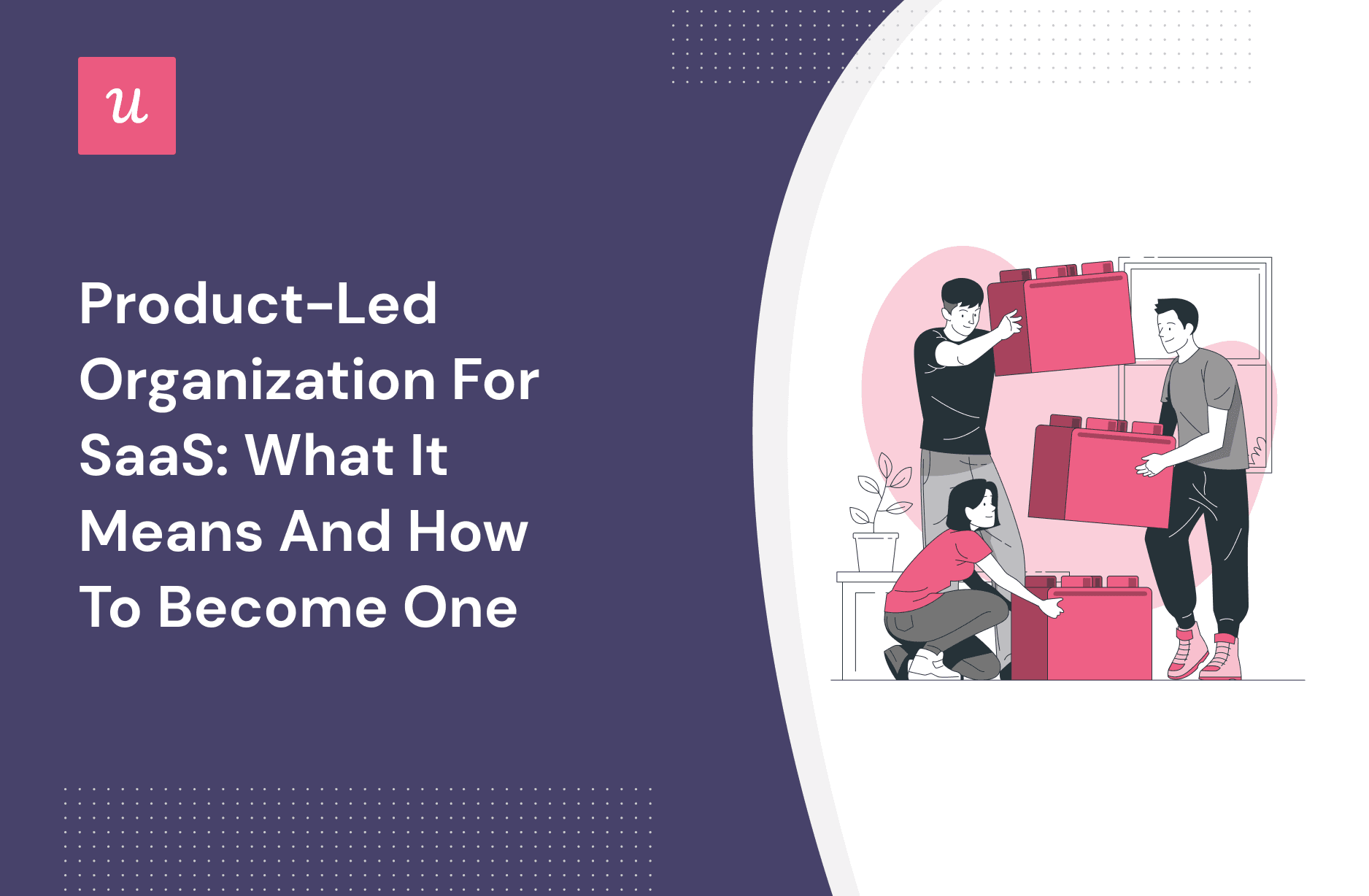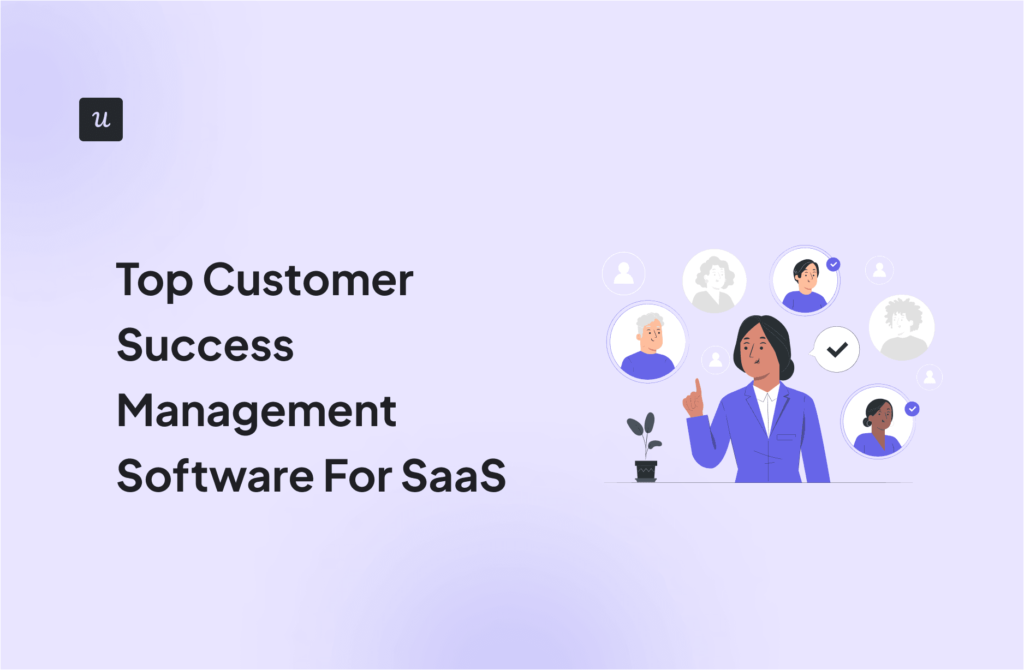
In SaaS, many companies identify themselves as a “product-led organization”.
But what does it even mean to be a product-led company? And does the term actually fit your company?
In this article, we’ll explore what it means to be a product-led organization and how you can unlock product growth with some real “product-led” strategies.
Try Userpilot Now
See Why 1,000+ Teams Choose Userpilot

What is a product-led organization?
A product-led organization emphasizes its product as its main growth strategy. It means that the company’s products are designed so users can easily discover its core features without needing much assistance from sales or customer success teams.
A product-led mindset operates under the premise that, if the product is really good at satisfying the market’s needs, users will convert into paying customers when given the chance to experience the value of the product for free.
Benefits of becoming a product-led company
As long as you follow the right product-led growth strategy, becoming a product company has several benefits including:
- Increased satisfaction and loyalty. Focusing on the product and its value leads to a better experience for users, which can result in increased customer satisfaction and brand loyalty.
- Higher retention rates. Product-led companies tend to have better retention rates because they focus on creating a product that customers love and want to continue using.
- Lower customer acquisition costs. Since the majority of customer growth comes from word-of-mouth and referrals, attracting new customers is cheap.
- The potential to scale faster with fewer resources. By focusing on creating a great product that customers love, companies can grow faster and more efficiently by lowering entry barriers and giving users free access to the product.
However, how does this model fit your company?
Product-led growth vs. other types of growth drivers
On one hand, most product-led growth companies are indeed SaaS businesses that adopt a freemium/free trial model.
However, that doesn’t mean every SaaS can fit this model. So let’s look at how product-led growth compares to other SaaS models.
Product-led growth vs. Sales-led growth
On a sales-led model, growth depends on big sales teams that can bring SQLs (sales-qualified leads), nurture them, and close as many contracts as possible.
The sales-led growth model is mostly for enterprise-level products, where the person responsible for the purchase decision is different from the person using the product (i.e. the user). And these types of high-ticket deals can only be closed with a proficient sales team.
With a product-led approach, though, users don’t need to reach out to a sales rep to book a demo. Instead, they’re free to explore the product and let it do the sale.
Product-led growth vs. Marketing-led growth
With a marketing-led strategy, there’s an emphasis on attracting and converting high volumes of potential customers through the marketing funnel (i.e. getting as many eyeballs on your product as possible).
It can involve creating content, investing in paid ads, and boosting brand awareness. As well as generate MQLs (marketing qualified leads) by providing value with gated content.
On the other hand, the most valuable software companies leverage word-of-mouth and referrals to expand their customer base. This is because the product is supposed to be so good that users can’t help but recommend it.
Product-led growth vs. Tech-led growth
Tech-led growth is mostly focused on providing the latest technology (e.g. GPT-4, machine learning, etc.) to attract early adopters, tech enthusiasts, or any company that needs new technology for their business.
In contrast, product-led organizations leverage technology to create a product that satisfies a market’s demand (even if they’re not the ones who develop the base technology).
Strategies to becoming product-led companies for SaaS
Now that you’re clear on how a product-led organization works and its philosophy, let’s look at some strategies to make your organization more “product-led”.
Choose your product-led model
One of the key characteristics of a product-led organization is that it allows the product to do the sale.
For this, you must offer some sort of free trial, which has three different models:
- Free trial. Which provides free access to the product for free for a limited time (trial length can be optimized but it’s usually 30 days).
- Freemium. Which offers a free plan that provides partial access to the product without a time limit, hoping that freemium users will eventually convert into paid customers.

- Mixed. Where the product has a freemium plan but also provides temporary access to all the product’s full features. They’re also called reverse trials, as it’s designed so users experience the difference between the free version and the full potential of the product once the trial ends.

The best model for you will often depend on your product-led strategy and how the product provides value (for instance, it doesn’t make sense to provide unlimited emails for free to a user that has a small email list). So feel free to iterate and try different combinations.
Identify your value metrics
Every product-led organization is built on the premise that a user will convert into a paid customer when they experience “value” from the product.
So ask yourself: what’s the measurable “value” that your product provides to your customer?
The answer to this question is going to be your value metric, and it’s essential for communicating the value of your product on your pricing model.
For example, since Userpilot is an onboarding and product analytics solution, one of our value metrics is the number of feature tags (click-to-track) you can add. And since our cheapest plan only offers 15 feature tags, it incentivizes newer customers to reach out to the sales team to upgrade their plan in case they need more.
Communicate your product value using your pricing page
Since product-led growth relies on providing self-service information, users will inevitably check the pricing page before signing up.
Thus, you need to optimize your pricing page to maximize free-to-paid conversions—for which you can apply value-based pricing.
You see, value-based pricing relies on the perceived value of your product as the basis for pricing (which you can only get by talking with users).
The idea is that, by tying the price to how much customers are willing to pay, a SaaS company will also focus its efforts on increasing the value its product provides.
Shorten time to value by improving user onboarding experiences
As a product-led company, offering a personalized onboarding experience is required if you want users to experience the value of your product fast.
For this, you can take advantage of welcome surveys to collect data and segment users based on their needs, use cases, JTBDs, and goals. Just like this Kontentino survey:

With such data, you can implement interactive walkthroughs to onboard users contextually—making it intuitive for users to understand what they have to do.
This type of walkthrough is more engaging for the user and it’s more likely to shorten time to value. And unlike generic product tours, they respond to in-app behavior in real-time and trigger tooltips when the user is more likely to need them.

Onboard and engage mobile app users by creating personalized messaging, push notifications, and surveys.
Drive user adoption with secondary and tertiary onboarding
As a product-led company, you must embrace secondary onboarding so users can experience the full value of your product—retaining customers in the process.
For this, you can use in-app messages to announce new feature updates and encourage current users to give them a try:

However, don’t forget to trigger in-app guidance as users interact with advanced features. This way, they’re not left alone when exploring the new UI.

Use product analytics to monitor and improve user engagement
Since your business growth relies on how your users achieve success with your product, product analytics are a must.
With analytics, you can monitor which features are being used, spot behavior patterns in specific segments, and know if users are getting value from your product.
For example, you could monitor the usage patterns and behaviors of power users to identify the happy path. Then use this information to build a replicable process that other users can follow to achieve similar success.

Collect and act on customer feedback
For optimal growth, your product development must be completely customer-centered.
Thus, you need to collect feedback to understand how your customers feel about your product and find ways to provide more value (and close the feedback loop).
Thankfully, you can automate customer feedback by triggering in-app surveys such as CES (customer effort score), CSAT, and NPS. This way, you can measure how your customers feel across the customer journey and find opportunities for improvement.
For example, you can complement your NPS surveys with a follow-up question and tag the responses (like in the image below). Then, you can quickly find common themes across detractors and promoters to see what’s working and what’s causing friction.

Keep track of your product-led growth metrics
Finally, you need to measure your own success if you want to make your customers succeed.
For this, there are some product-led metrics you should track if you want to make sure your business is growing healthy:
- Product adoption rate: This metric shows the percentage of users who have adopted your product’s core features and are using them regularly.
- Customer lifetime value (LTV): This metric measures the total revenue that you can expect to generate from a single customer over their entire relationship with your product.
- Average revenue per user: This metric calculates the average amount of revenue that you generate from each user of your product.
- Retention rate: This metric tracks the percentage of users who continue to use your product over a given period of time.
- Churn rate: This metric measures the percentage of users who stop using your product over a given period of time.
Conclusion
Although a product-led organization can enjoy reduced expenses associated with running large sales and marketing teams, it’s not easy to achieve.
But since it motivates companies to build products that truly satisfy user needs and delight them in the process, it can be worth it.
However, you’ll need software that deepens software product adoption. So why not book a Userpilot demo to see how it can help you become a product-led company?






